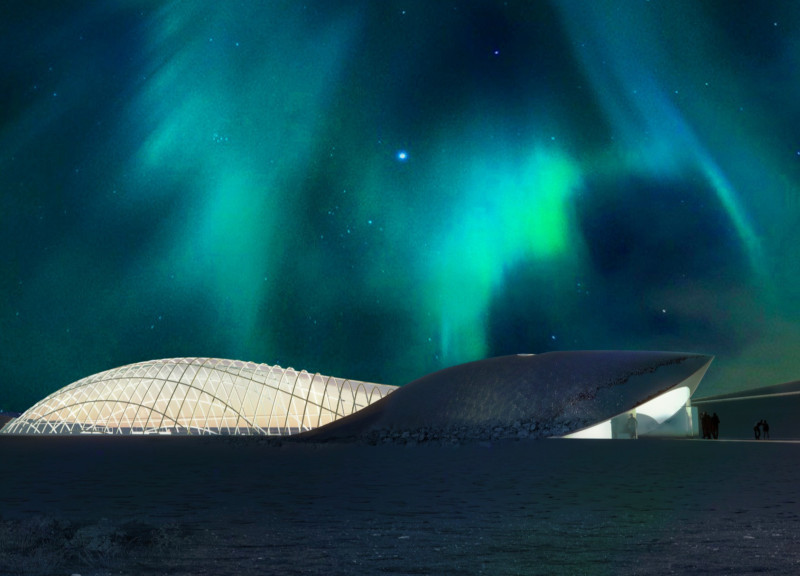5 key facts about this project
The "Rain Drop" Pavilion is an architectural project located at the base of Hverfjall volcano, near Lake Mývatn in Iceland. This structure serves as both a functional space and an attraction for visitors, designed to integrate seamlessly with the surrounding landscape. Its purpose is to provide educational and cultural experiences related to coffee production and offer a gathering space for tourists and locals alike.
The pavilion features a dynamic and fluid roof design that mimics the form of raindrops, enhancing its connection to the natural environment. This unique roof not only draws the eye but also contributes to a sense of openness and connection with the landscape. Constructed with a monolithic reinforced concrete foundation and a lightweight ETFE shell, the design prioritizes sustainability. The ETFE material allows for natural light while maintaining thermal efficiency, promoting an environment that is both inviting and energy-efficient.
One significant aspect of the "Rain Drop" Pavilion is its multifunctionality. The interior layout includes an amphitheater-style seating arrangement around a central coffee area. This encourages community interaction while educating visitors about local coffee culture. The pavilion’s design supports a range of activities, from workshops and talks to relaxation areas, making it adaptable to various events and functions. Such flexibility distinguishes this project from many similar structures, which often serve a singular purpose.
In addition to its practical uses, the pavilion engages visitors with its setting, enhancing the overall tourist experience in the Icelandic landscape. The careful selection of materials, combined with innovative architectural forms, allows the pavilion to withstand the region’s climatic challenges while responding to the need for sustainable design. This project fosters a dialogue between architecture, nature, and culture, positioning it as an exemplary model for future architectural endeavors in ecologically sensitive areas.
To gain deeper insights into the architectural plans, sections, and designs that make the "Rain Drop" Pavilion distinctive, readers are encouraged to explore the project presentation. This detailed review will offer a comprehensive understanding of the architectural ideas that underpin the project and its innovative approach to integrating culture and environment.






















































